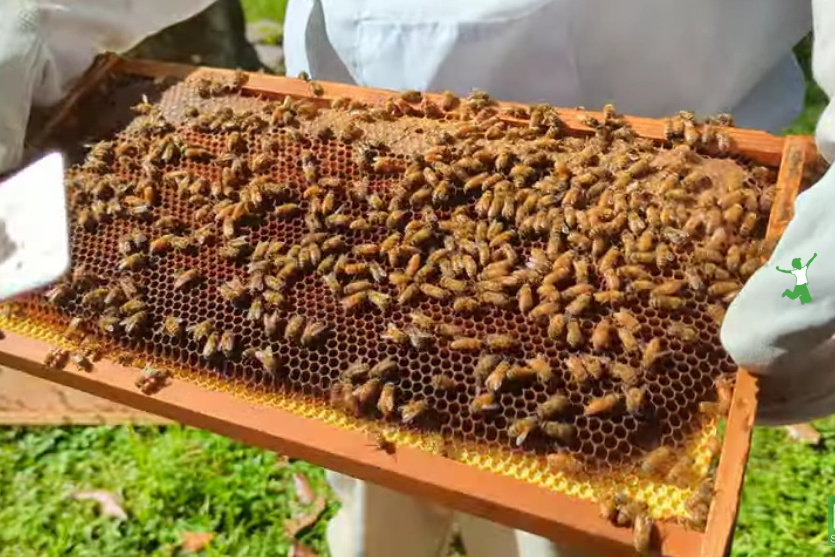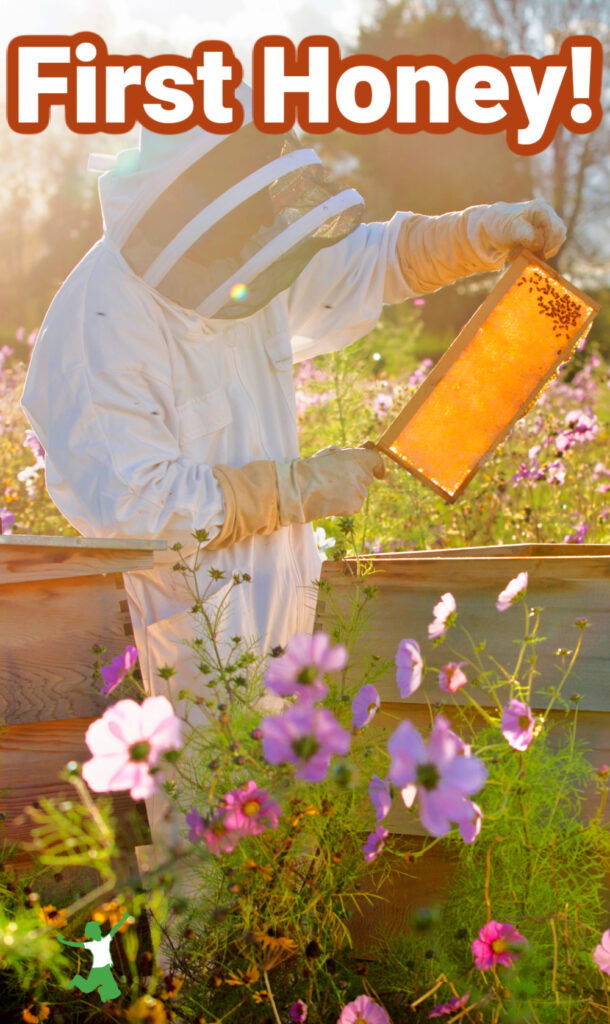Table of Contents[Hide][Show]
How quickly a new beehive produces its first batch of honey with a video of the process unfolding in a backyard organic colony.

I am very excited to share that my new beehive is starting to produce its first honey!
Those of you following my journey as a new beekeeper may recall that I received my first backyard beehive in March 2023.
It was actually a Christmas present from my husband, courtesy of our local Gem Apiaries, but it couldn’t be put into place until the mild Spring weather arrived!
It’s been almost exactly four months, and right on time, the bees are starting to produce honey.
To give you some perspective on how quickly the hive has grown, the initial colony consisted of about 4,000 bees.
The hive is now about 15,000-20,000 strong despite a problem with the queen bee only a couple of months after the hive was started. She was injured which required requeening the beehive as quickly as possible to maintain its viability.
We had a critical juncture at that time because the new queen the colony hatched itself did not survive a string of hailstorms that occurred during her mating flights.
I am fortunate as a neighbor about a half mile away has several backyard beehives. So, there was only a short distance for our queen to fly to find genetically unrelated drones.
Unfortunately, those hailstorms really threw a wrench in the works!
We ended up having to purchase a queen and insert her quickly to maintain the hive’s growth and viability.
First Honey in a New Beehive
Despite these setbacks, the hive is thriving and is demonstrating as such with honey production.
The video below shows the first honey and honeycomb 🐝 🍯
However, I cannot harvest this honey because the hive is in its first season. It needs to build up its size and strength first.
The best-case scenario is that once the ideal weather of October arrives, there might be enough surplus. Then, I can harvest some honey for our family and also for holiday gifts.
However, the more likely scenario is that I am able to harvest my first surplus honey when the colony is in its second season next year.
Surplus Honey Only!
In other words, a good beekeeper will only take honey from a hive that is in excess of what the colony needs.
I certainly won’t take any that the hive needs for optimal thriving and survival over the winter.
A ten-frame Langstroth hive, which is what I have, can be expected to produce 50-100 pounds of surplus honey every year if it is healthy and thriving!
Hint: I’m having so much fun, that next year, I’m also going to possibly get a second backyard hive!









We started bees a few years ago too! The first year we did as you did – only processed a little honey so we could leave enough for the hive to survive the wisconsin winter. You should buy a second hive, if only to have room for when your hive becomes strong/big enough so that it wants to swarm – if you are watching, at the appropriate time you can take half the hive and put it in the new hive (along with a few queen cells).
Yes, that is what I’m planning to do! Thank you for sharing your experience 🙂 It’s so much fun!